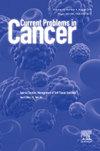Roles for epigenetic and other biomarkers in upper tract urothelial carcinoma diagnosis and surveillance
IF 2.3
4区 医学
Q3 ONCOLOGY
引用次数: 0
Abstract
Upper tract urothelial carcinoma (UTUC) is a rare but aggressive malignancy with increasing incidence, often diagnosed at advanced stages due to the limitations of current diagnostic tools. Conventional methods such as urinary cytology, imaging, and ureteroscopy have important drawbacks, including low sensitivity, high costs, and procedural invasiveness. As a result, there is a growing need for non-invasive, highly accurate diagnostic approaches.
Epigenetic biomarkers, particularly DNA methylation-based assays, have emerged as promising alternatives for UTUC detection and surveillance. Among these, Bladder EpiCheck® (BE) has shown remarkable sensitivity and specificity, particularly for high-grade tumors, making it a valuable adjunct to standard diagnostic techniques. By analyzing tumor-specific methylation patterns in urine samples, BE offers a practical and non-invasive solution that could improve early detection, reduce the need for ureteroscopy, and enhance risk stratification. Several studies have demonstrated its superior diagnostic accuracy, with sensitivity reaching 97.4 % and specificity up to 100 % for high-grade UTUC.
Despite these advantages, challenges remain regarding the standardization of testing protocols, validation in larger patient cohorts, and evaluation of cost-effectiveness. Moreover, the role of DNA methylation biomarkers in guiding clinical decisions and predicting disease progression requires further investigation. This review explores the current state of UTUC diagnosis, compares BE with conventional and emerging biomarkers, and discusses its clinical applications, limitations, and future perspectives. The integration of molecular biomarkers like BE into clinical practice has the potential to revolutionize UTUC diagnosis, improving patient outcomes through more precise, non-invasive detection strategies.
表观遗传学和其他生物标志物在上尿路上皮癌诊断和监测中的作用
上尿路上皮癌(UTUC)是一种罕见但侵袭性的恶性肿瘤,发病率越来越高,由于目前诊断工具的限制,通常在晚期诊断出来。传统的方法,如泌尿细胞学、影像学和输尿管镜检查有重要的缺点,包括低灵敏度、高成本和程序性侵入性。因此,对非侵入性、高度准确的诊断方法的需求日益增长。表观遗传生物标志物,特别是基于DNA甲基化的测定,已经成为UTUC检测和监测的有希望的替代方法。其中,膀胱EpiCheck®(BE)已显示出显著的敏感性和特异性,特别是对高级别肿瘤,使其成为标准诊断技术的宝贵辅助手段。通过分析尿液样本中肿瘤特异性甲基化模式,BE提供了一种实用且无创的解决方案,可以提高早期发现,减少输尿管镜检查的需要,并增强风险分层。几项研究证明了其优越的诊断准确性,对高级别UTUC的敏感性达到97.4%,特异性高达100%。尽管有这些优势,但在测试方案的标准化、在更大患者群体中的验证以及成本效益评估方面仍然存在挑战。此外,DNA甲基化生物标志物在指导临床决策和预测疾病进展中的作用需要进一步研究。本文探讨了UTUC诊断的现状,将BE与传统和新兴的生物标志物进行了比较,并讨论了其临床应用、局限性和未来前景。将BE等分子生物标志物整合到临床实践中,有可能彻底改变UTUC的诊断,通过更精确、非侵入性的检测策略改善患者的预后。
本文章由计算机程序翻译,如有差异,请以英文原文为准。
求助全文
约1分钟内获得全文
求助全文
来源期刊

Current Problems in Cancer
医学-肿瘤学
CiteScore
5.10
自引率
0.00%
发文量
71
审稿时长
15 days
期刊介绍:
Current Problems in Cancer seeks to promote and disseminate innovative, transformative, and impactful data on patient-oriented cancer research and clinical care. Specifically, the journal''s scope is focused on reporting the results of well-designed cancer studies that influence/alter practice or identify new directions in clinical cancer research. These studies can include novel therapeutic approaches, new strategies for early diagnosis, cancer clinical trials, and supportive care, among others. Papers that focus solely on laboratory-based or basic science research are discouraged. The journal''s format also allows, on occasion, for a multi-faceted overview of a single topic via a curated selection of review articles, while also offering articles that present dynamic material that influences the oncology field.
 求助内容:
求助内容: 应助结果提醒方式:
应助结果提醒方式:


